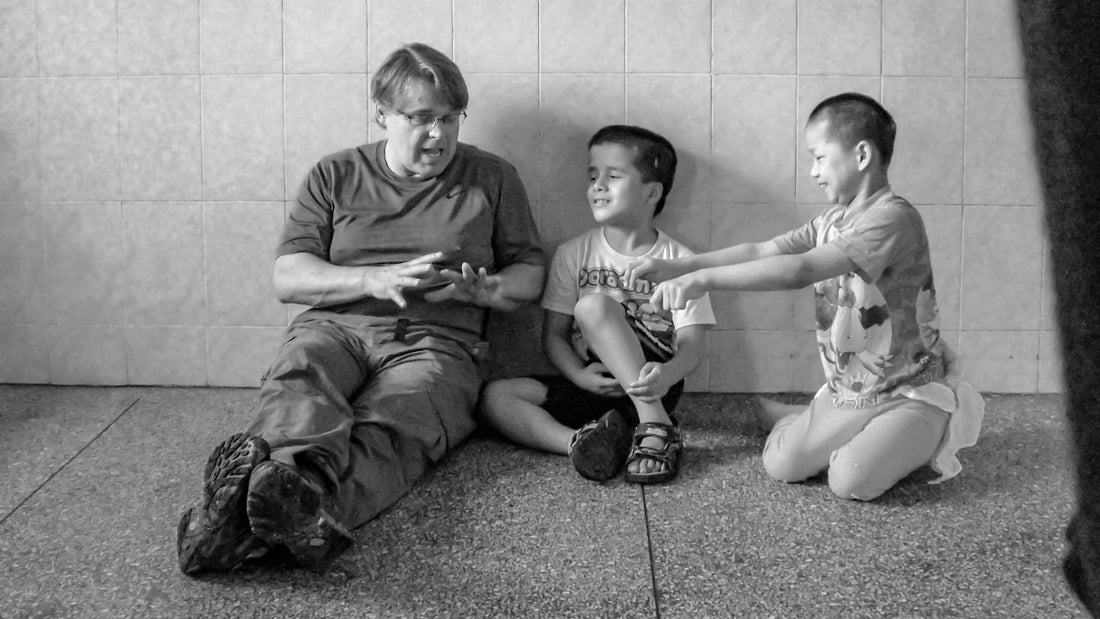
China Portraits - Pictures of Place
Portraits from Guangdong and Yunnan Provinces

I travelled to China three times in early 2000. All visits were to Guangdong Province plus my third and final visit in 2010 included Yunnan Province as well. While in Yunnan we spent time in four leprosy colonies in the remote and mountainous regions just north of Vietnam.
In 2007 I was asked by a small NGO (Eco Village of Hope) if I would accompany them as photo documentarian to Namon Village which was a small subsistence farming community in the province of Guangdong. We were to spend three weeks there and I would be tasked to photograph their day to day interactions. I agreed willingly, provided I could have creative freedom to shoot from my own visual perspective. Knowing that this was a rare opportunity, I also requested that I have time to shoot for myself as well. Over three visits I created three distinct portfolios: one focusing on rural and urban landscapes, one that was more editorial in nature focusing on life in and around Namon Village, and a final portfolio that was focused on portraiture and of a more formal nature. In this blog post my focus will be on the portraiture portfolio.
Prior to this trip I had not shot portraits for many years. I expected to be more focused on editorial style photography but quickly became aware of the immense potential and power in focusing on the faces of the people I was surrounded by. Environmental portraiture adds a layer of complexity to the photo session. Paying attention to the angle and origin of the light was of key importance. Then quickly perusing the scene and composing to eliminate visual clutter while focusing attention on the face of my subject (which is what portraiture is all about)!

As was the case in every visit to China, we stayed for longer periods in a single location. I hung out with the villagers, often without my camera, and after a short period of time I was accepted as just part of the scenery. I watched them play mahjong, helped in planting rice seedlings and just hung out on the large concrete platform just beside their water reservoir. This was where everyone would congregate in the evenings or for morning Tai Chi.
When I did have my camera with me, the interactions were comfortable for the most part. Some of the kids liked to ham it up but the adults seemed to know I was there with purpose and just carried on with their daily routines. They would regard me initially but soon turned their attention to what they were doing previously. In many cases, the adults would seek me out to come and shoot what they were doing.

I was given a rare opportunity but I was also keenly aware that I was “the outsider” and went out of my way not to be obnoxious. If someone showed any signs of not wanting me to shoot I stopped immediately although this was extremely rare. That said, there are a few things that I’d like to touch on which I think all photographers should be aware of.
- Respect The most important consideration for anyone travelling whether they are photographers or not, is to respect where you are and respect the people who live there. I have always tried to abide by this credo and am aware and considerate of the place I am in.
- Inspiration As an addition to being respetful, take inspiration from where you are. To my mind, travel is one of the best opportunities to stretch yourself as a human and a way of connecting at a much deeper level than, say, reading about a place from a book. I recognized that this opportunity was a once off and I was thinking and seeing photographically most of the time. Walking through the tiny alleys and seeing this totally different way of living was transportive and fed my creative vision continually.
- Community Be engaged. I have a natural interest in people and will say: “hi, how are you doing”, without hesitation. Even though I spoke no Mandarin or Cantonese, I enjoyed just hanging out watching the interactions and goings-on between the villagers as they went about their days.

Ultimately, I find photography to be another communicative layer to my inquisitiveness and how I like to engage in the world. Portraiture emphasizes this in spades. The images in my portraiture portfolio all represent a specific point in time and I can easily recall that moment in great detail. I saw things that set me back and, in some cases I experienced overwhelming poverty. But the overriding and enduring fact was that I experienced humility, humanity and kindness everywhere I went. You can gain further insight to the backstory of the portraits by visiting my social media feeds on Instagram (www.instagram.com/speersteve), Facebook (www.facebook.com/steve.speer.169) and LinkedIn (www.linkedin.com/in/steve-speer-9a87681).

